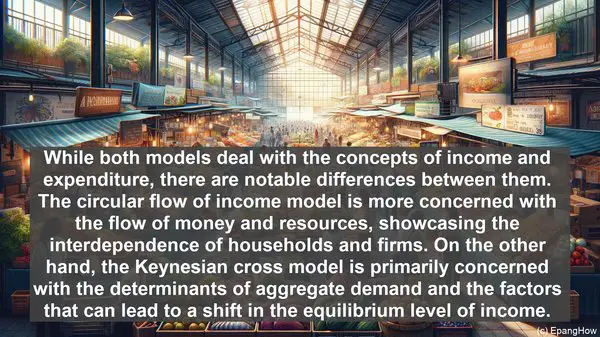Introduction
Hello everyone! Welcome to our article on the circular flow of income model and the Keynesian cross model. These two economic frameworks are crucial in understanding the dynamics of income, expenditure, and economic equilibrium. So, let’s dive right in!
The Circular Flow of Income Model
The circular flow of income model is a simplified representation of the economy. It illustrates the flow of income and expenditure between households and firms. In this model, households are the primary source of consumption expenditure, while firms are the source of investment expenditure. The circular flow demonstrates how income earned by households is spent on goods and services, which in turn generates revenue for firms, leading to further income generation.

Keynesian Cross Model
The Keynesian cross model, on the other hand, focuses on the relationship between aggregate demand and aggregate supply. It is named after the renowned economist John Maynard Keynes. The model depicts the equilibrium level of income in an economy, where aggregate demand equals aggregate supply. It takes into account various components of aggregate demand, such as consumption, investment, government spending, and net exports.
Differences between the Models
While both models deal with the concepts of income and expenditure, there are notable differences between them. The circular flow of income model is more concerned with the flow of money and resources, showcasing the interdependence of households and firms. On the other hand, the Keynesian cross model is primarily concerned with the determinants of aggregate demand and the factors that can lead to a shift in the equilibrium level of income.
Implications and Applications
Understanding these models has significant implications for policymakers and economists. The circular flow of income model helps in analyzing the impact of changes in consumption or investment on the overall economy. It also highlights the importance of maintaining a balance between income generation and expenditure. The Keynesian cross model, with its focus on aggregate demand, provides insights into the effectiveness of fiscal and monetary policies in stabilizing the economy during periods of recession or inflation.

